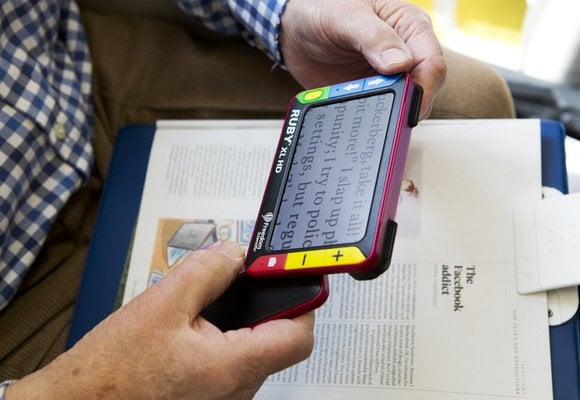Celebrating the history of Talking Books
Talking Books has been one of our most loved services for more than eight decades. It all started in 1935 when RNIB began providing books to war-blinded soldiers.

First World War
Thousands of soldiers lost their sight during the First World War battlefields.
They returned to Britain no longer able to read and not all of them had been able to learn braille. Some found the code too difficult, while others had injured their hands.
Captain Ian Fraser lost his sight at the Battle of the Somme in July 1916, after being shot through the eyes by a German sniper. A single gunshot had robbed him of one of his greatest passions: reading.
Fraser tried to put his life back together in England. He worked hard to learn braille at St. Dunstan’s, a hostel built to help blind veterans like him. One day, frustrated at how slowly he could read, he cried out, "If books could only talk!" It was while listening to a gramophone at St. Dunstan’s that he was inspired to record an entire “Talking Book”.
RNIB studio
RNIB set up its own recording studio in London in 1934. By narrowing a shellac record’s grooves and playing it at a reduced speed, Fraser’s team successfully made records that could play for 25 minutes per side. RNIB blazed a trail in audio innovation.
The very first RNIB Talking Books
The first Talking Books went out to readers on 7 November 1935. Books like Agatha Christie’s The Murder of Roger Ackroyd were shipped in sturdy containers for free and returned at a special reduced postal rate.
The average novel would fit onto 10 discs. Even the entire Bible could be recorded. People listened to these records on specially designed turntables that played at three different speeds.
Even braille readers appreciated the chance to give their fingers a break and one declared, “It is glorious to be able to sit back and be read to”. “Don’t you think this is real luxury?” asked one ex-soldier who listened to talking books every night before bed. Two years after the library opened, nearly a thousand people had received Talking Book machines.
From gramophone records to tape
Over the years that followed, RNIB pushed on with our evolution of the Talking Book, making the move from gramophone records to tape in 1960. The new tape format proved significant as membership skyrocketed in the next few years, with many new members experiencing Talking Books for the very first time. Just as in the early days of the gramophone disc, though, we found cassette tape had its limitations and looked ahead once more.
From tape to DAISY CD
The DAISY Consortium was formed in May 1996 by talking book libraries to lead the worldwide transition from analogue to Digital Talking Books.
DAISY stands for Digital Accessible Information System. It is a technical standard for digital audiobooks. Structured MP3 audio with text and graphics to allow readers to navigate through the book.
In 2002 RNIB sent out its first books on DAISY CD. With books typically being on one CD and the DAISY players being able to save your place in the book, this was a revolutionary leap forward in terms of user experience.
New options
In 2014, as a result of customer demand, RNIB Talking Books was offered on memory stick, as well as on DAISY CD. With inexpensive USB players on the market, this option proved popular with new members of the library. We also launched RNIB Overdrive, a digital download service which provided access to more than 20,000 titles directly to a smartphone or tablet.
In 2015 to celebrate 80 years of the Talking Book service, RNIB made the service free. This led to dramatic growth in new customers.
In 2020, RNIB replaced Overdrive with a new Reading Services platform which offers high-quality DAISY audiobooks (and eBraille) for download.
In 2021, RNIB Talking Books were made available through Alexa-enabled devices, such as Amazon smart speakers using an Alexa skill, as well as through our usual library services.
Today, Talking Books reach tens of thousands of blind and partially sighted people. And it all started in 1935 when RNIB began providing books to war-blinded soldiers.







